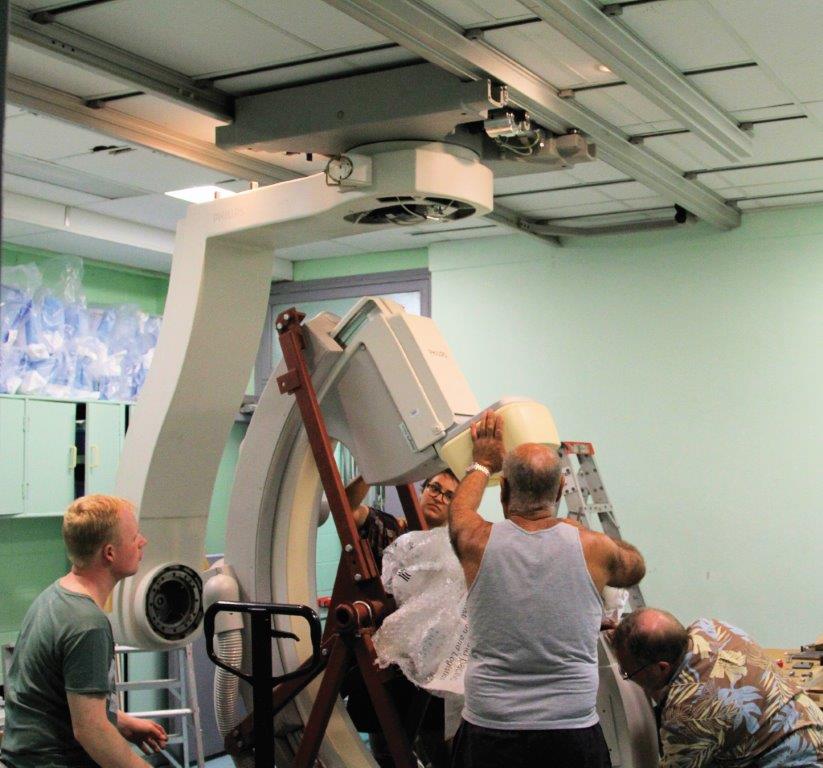A Rotary Australia World Community Service Project

|
. . |
Our mission is to serve underprivileged people in the developing world by providing them with medical imaging facilities for the diagnosis and treatment of disease.
RAWCS relocates used x-ray machines to developing countries, provides maintenance, training and ongoing technical support. Cath Labs are specialised X-ray facilities used to examine the heart and blood vessels. They are also used to treat some medical conditions. These include management of congenital heart defects, stenotic valves, the placement of stents, and the implantation of pacemakers.
|


Over 30,000 patients have been diagnosed and/or treated as a direct result of this work.
Equipment up and running

How we go about this work
- The need is established through contacts in the recipient country. These RAWCS project are only carried out in cooperation with recognized hospitals, clinics and national institutions that have the ability to utilize the equipment.
- A local Rotary club is involved in the choice of the recipient hospital. The involvement of Rotary ensures 'buy in" by the local community and ensures customs and government interactions are properly managed.
- A donated machine is removed from an Australian medical facility (by RAWCS volunteers) and placed into storage pending dispatch.
- Once the recipient facility is prepared for the equipment the container is dispatched to the site.
- A team of Rotarians install the equipment under the supervision of an engineer who specializes in x-ray equipment.
- Training is conducted by the x-ray specialist so that local radiographer and/or biomedical engineer can perform basic maintenance tasks.
- When required, an interventional cardiologist, radiologist and nursing team is assembled to train local doctors in the use of the equipment.
- Maintenance is managed remotely where possible or a site visit is made if required. Spare parts are supplied free of charge when they can be obtained from stock. Only rarely is full price paid for spare parts.
- After 5-7 years the machine reaches the end of its life and may become unserviceable. In many cases a replacement machine may then be made available to take its place.
A team of Rotarians from Australia traveled to Mongolia to install a Cardiac Catheterization Laboratory at Shastin Hospital. The project, done in conjunction with the Ulaanbaatar Rotary Club, replaces a machine installed by the same team in 2003. Each year thousands of Mongolian people receive treatment in the lab and the new machine will provide expanded technical capabilities for greatly improved health care.
How you can help
- Make tax deductible donations to the Medical Imaging Machines project at www.rawcs.org.au
click on SEARCH FOR A PROJECT
then enter project number 27
year registered 2011-12The project is "Installation of Medical Imaging Machines and training of personnel Worldwide"
follow the prompts to donate.
- Send a cheque to the Rotary Club of Nunawading with your details.
Contact us on:
- rawcsmim@optusnet.com.au
and join our distribution list to be kept informed on our latest projects and past project news.Join one of our teams to relocate or install a laboratory. We often need help from local Rotary clubs to remove x-ray equipment and to send it to storage.
-
Register your willingness to help at rawcsmim@optusnet.com.au


